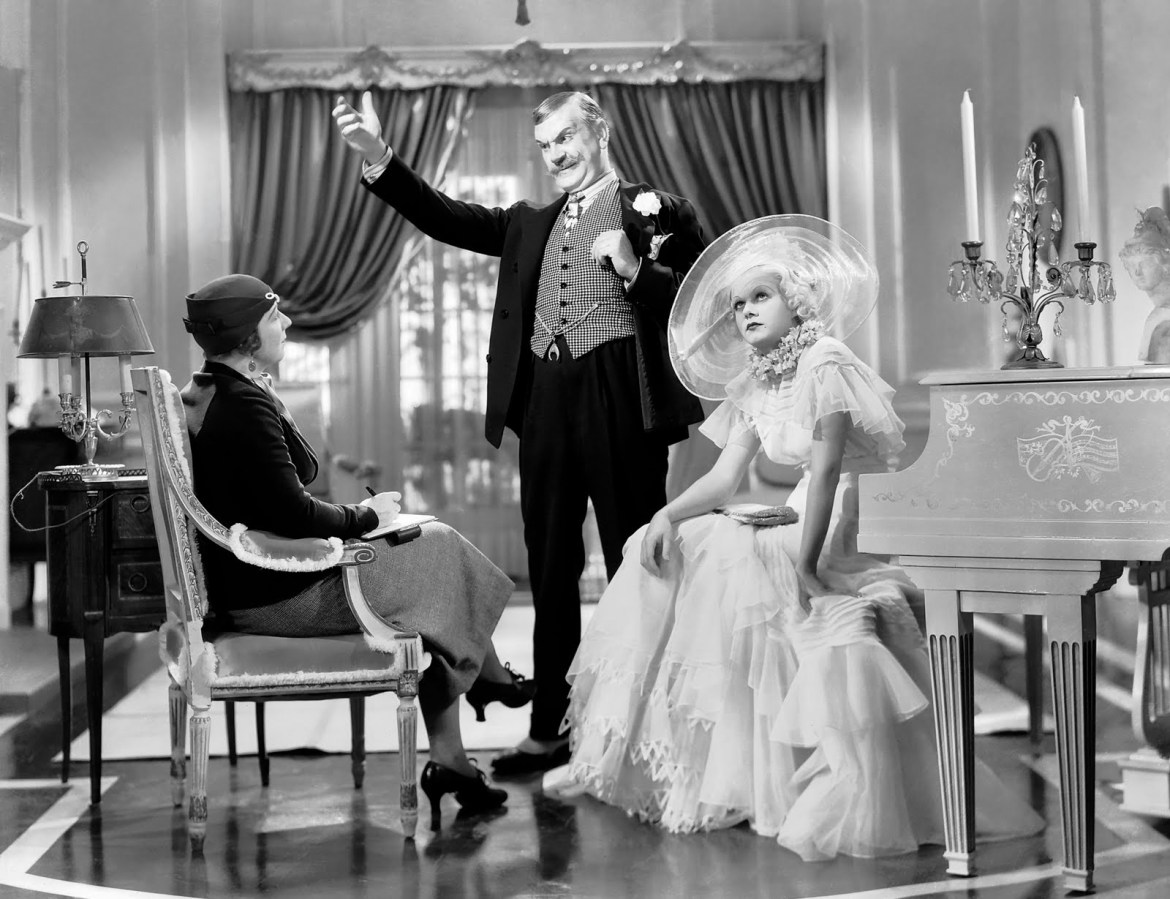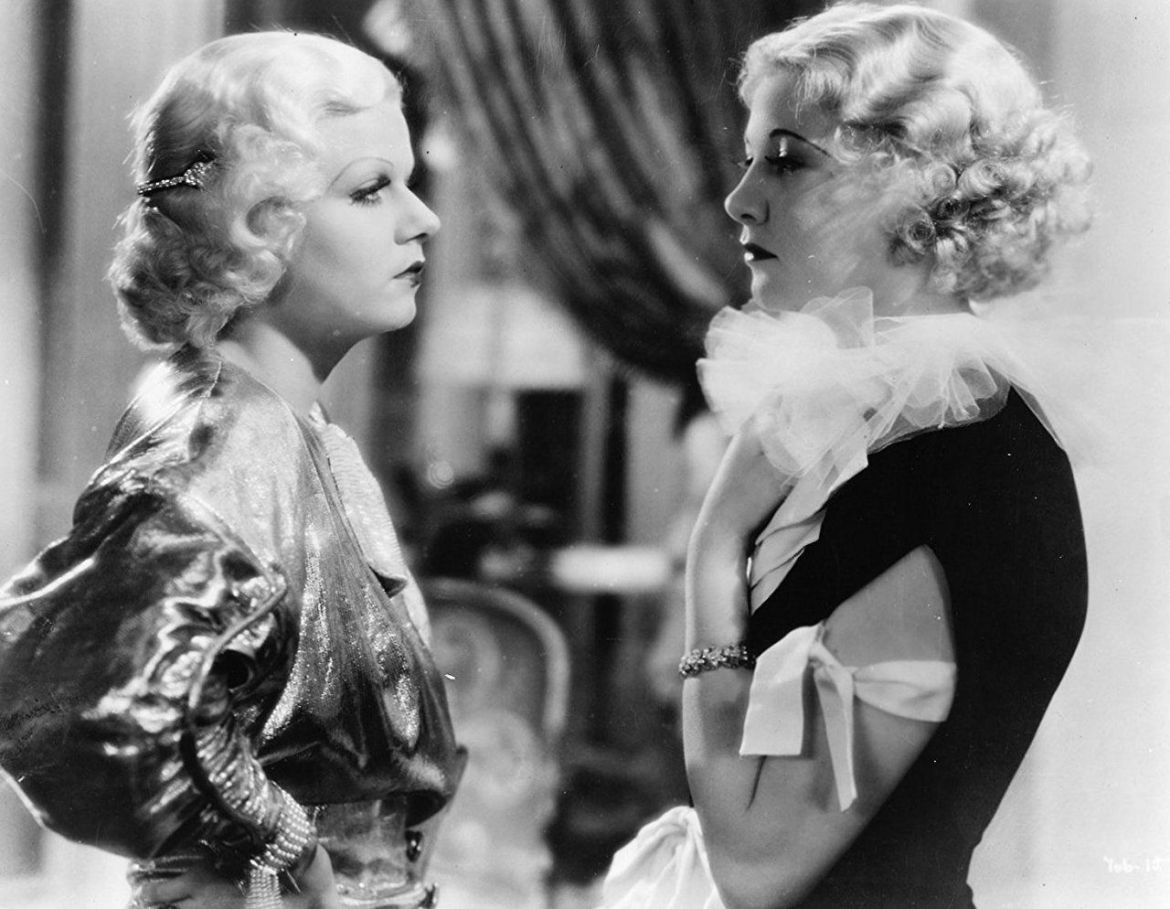While Jean Harlow passed away more than eighty years ago, there are a few of her movies which have seemingly transcended the decades. One of these is Bombshell. Watching the 1933 film, it seems deeply tied in with Harlow’s star persona. After all, the actress was known as “The Blonde Bombshell”. In our continuing examination of Jean Harlow’s work, we look at how the comedy plays when looking at Harlow, the narrative, and the men working alongside her.
Bombshell follows actress Lola Burns (Jean Harlow). The “Blonde Bombshell” quickly grows frustrated with her lack of control of the chaotic goings on that is her life. Desperate to evolve her image, she goes through a whirlwind of changes: marriage, babies, etc. However, as studio press agent Space Hanlon (Lee Tracy) is quick to remind her, this isn’t what the people want! People want her to be sexy. Marriage isn’t sexy. Victor Fleming directs from a script by (among others) John Lee Mahin and Jules Furthman.

We see Harlow’s traditional star persona in play in this film. The way the narrative is structured, we see Lola (and through her, Harlow) actively reeling against her heavily studio-developed star persona. Her actions get increasingly dramatic, until she finally runs away from Hollywood. She’s done being a sex object. Rather, she wants to be a woman… however Lee Tracy’s hyper-active publicity man won’t let this happen.
Bombshell is crazily self-reflexive. Early in the film, we see Lola arrive at her movie studio. She quickly preps for a bathtub scene, which we learn from director Jim Brogan (Pat O’Brien) is for a movie called Red Dust, co-starring Clark Gable. Interestingly, Harlow actually starred in a film entitled Red Dust only one year before Bombshell. That film too starred Clark Gable. In fact the scene they’re recreating involves Lola bathing in a rain barrel, which is a famous sequence from the now classic Red Dust. As a result, there’s very little apart from her character’s name change to remind us that this is actually Harlow playing a role. It’s constructed in a very true to life form.

Bombshell is very much a slapstick comedy, making it stand out against the films we’ve looked at thus far. Reckless and The Girl from Missouri have been far more dramatic in tone. As such, Harlow’s performance in the film doesn’t feel quite as spot-on as she has in these other films. In her later work, she feels more in-tune with emotional depth of the material. That being said, Harlow doesn’t struggle with the content. Rather, she is very funny, and more than keeps up with the dialogue, easily going toe-to-toe with the unbelievable pace of co-star Lee Tracy. However, dramatically, her character simply doesn’t feel as emotionally fleshed out as some do in her later works, more than making sense as Harlow continued to develop as an actress after this film.
Ultimately, the film is packed to the metaphorical rafters. Backing up Harlow and Tracy are character actors Frank Morgan, Una Merkel, Pat O’Brien and a pre-almost everything Franchot Tone. This is a lot, especially jammed into a less than 100 minute movie. Luckily, the crowd doesn’t feel particularly noticeable until late into the second act. This is most noticeable as the film comes to its romantic conclusion. There has been so much romantic exploration, but nothing has seemingly reached a boil. As a result, Bombshell’s ultimate conclusion doesn’t feel supported by the narrative. Of her love interests in this film (O’Brien, Tone and Tracy), Harlow achieves the best physical chemistry with Tone; however, this plot-line is barely developed before it is taken away again. Much like her later film Reckless, Bombshell feels like it could easily be two movies.

The most interesting performance in this film comes from actor Lee Tracy, a name largely unknown to film viewers today. He made his last screen appearance in 1965, shortly before his death in 1968. The actor is a spot-on choice for publicity man “Space” Hanlon. Tracy’s performance is borderline manic, his dialogue is delivered at a pace which makes a film like His Girl Friday feel calm. Fun fact: Tracy originated the part of Hildy in Front Page… the play from which His Girl Friday is based. The actor was part of an initial wave of Broadway performers who came to Hollywood with the advent of synced sound in pictures, and he worked steadily throughout the 1930s, playing primarily newspaper reporters.
Much has been written about director Howard Hawks and the zany slap-stick comedies of the late 1930s and early 1940s (Bringing Up Baby and His Girl Friday to name two). Interestingly, Lee Tracy feels like an instrumental piece of this era of cinema. Listening to him in Bombshell, he could easily out-talk Cary Grant. In fact, he took on this persona nearly a decade before the release of these Hawksian movies. Those well-remembered performances likely stemmed from Tracy’s work (as well as other performers of this era). Stay tuned to this website for more from Lee Tracy in the coming weeks.
Finally, Bombshell is an interesting slice-of-life from Harlow’s career in the early 1930s. While there is some fascinating work done, particularly with the self-reflexivity in the narrative and actor Lee Tracy as her co-star, it feels hindered by the restrictions of cinema the era. It could use so, so much more. Ultimately, while Harlow is great in a comedic role, her part feels shallow in comparison to her later dramatic work. However, this film is a definite must see when looking into Harlow’s developing star persona.
Bombshell is currently streaming on FilmStruck.
